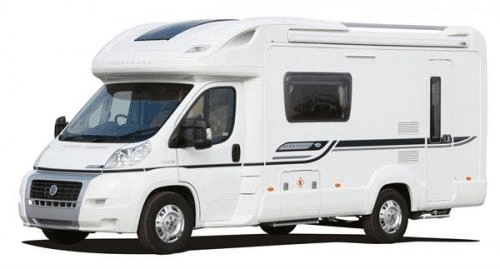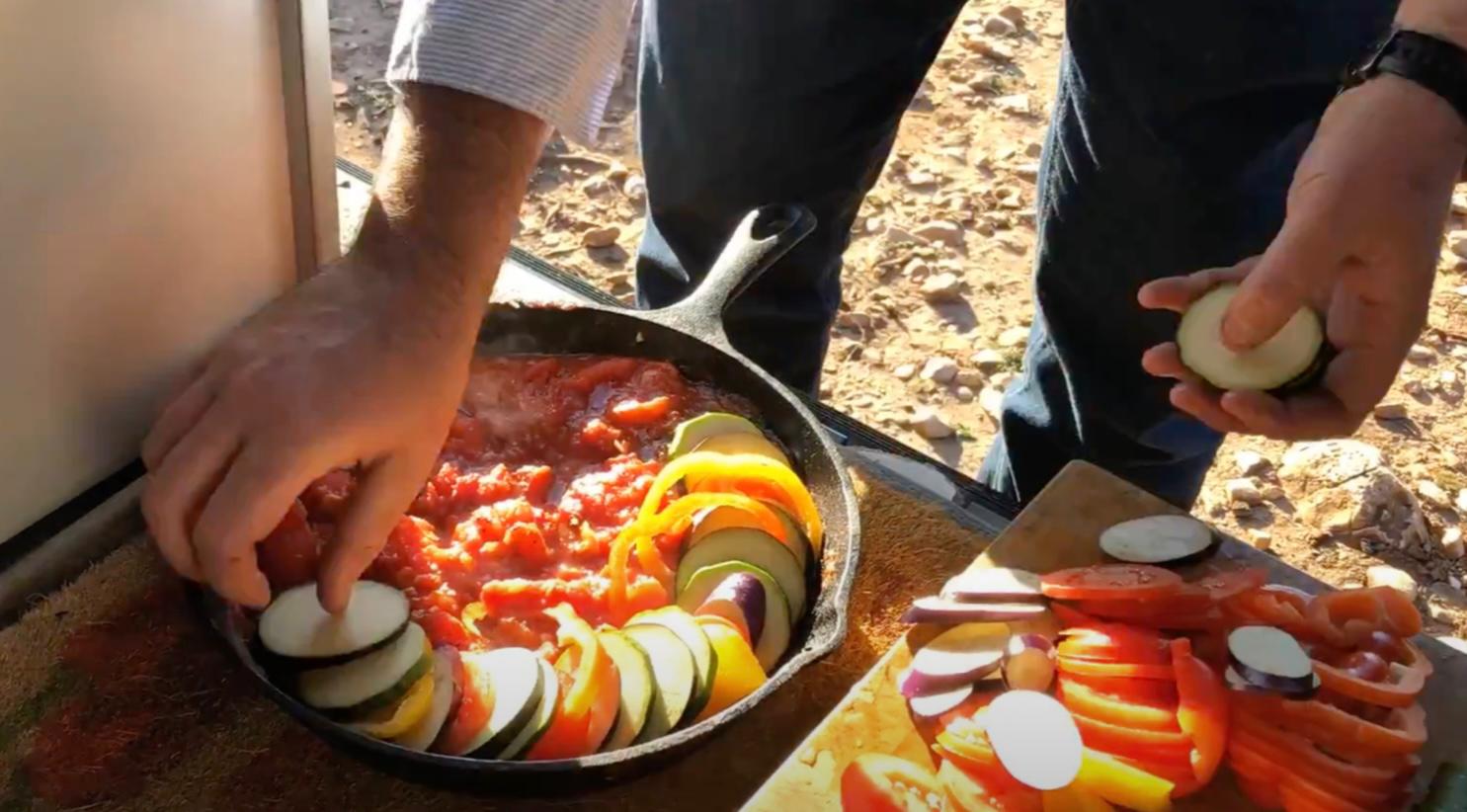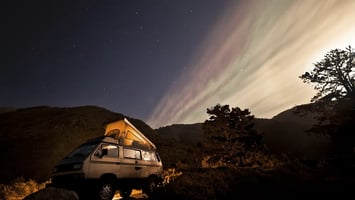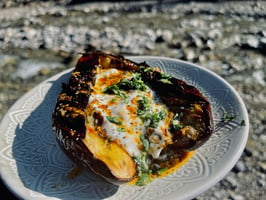
Campervan Cooking Adventures - Michael from @ChefCampers

When I was asked to share a story and a recipe for CamperBuyer.com, I wasn’t sure where to start. How do you even begin to unpack seven years of full-time travel around Europe as a chef? Nineteen countries. Thousands of plates. Unbelievable stories — some you wouldn’t believe even if I told you. Selling everything we owned, moving into a campervan, and pointing the compass toward whatever smelt good felt bold at the time. Now, it feels like the best decision we ever made.
And the truth is — I never want to stop.
I’m absolutely thrilled that CamperBuyer invited me to share some of our stories and recipes with you. We’ve always prided ourselves on being raw, honest, and authentic. And when I looked into CamperBuyer, I saw shared values. I knew right away — these are people I’d gladly invite to my dinner table, wherever that happens to be.

One of the greatest joys of travelling in a motorhome is reaching the places the airlines forgot. I love a city break. But I’m far more drawn to the spots with no bus stops and no train stations. The places where the food is for locals and the parking is easy — those are the real treasures. Running a restaurant in a tourist zone? That’s easy. The crowds change daily. Running one in the suburbs, or a small town? That’s the real test. You feed the same crowd, week in, week out. It’s got to be honest food. No tricks. No frills. That’s where the farmers eat. The winemakers. The truck drivers. That’s the belly of the country.
And for me, the quiet villages around Sintra capture that spirit. Sintra sits about 20 miles west of Lisbon, but it feels like a different world entirely. You leave the city behind, trade motorways for winding roads, and suddenly you're climbing into the hills. Not alpine peaks, just enough altitude to make the air cooler, the trees taller, and the mood shift. It’s no surprise Sintra has pulled in poets, royals, and the odd wandering chef for centuries. The place has layers. Moorish fortresses, Romantic palaces, crumbling gardens, and winding cobbled alleys that don’t seem to go anywhere and don’t need to. They usually lead to some kind of view worth admiring, especially over the rugged coastline.
Historically, Sintra was where Lisbon’s elite escaped the summer heat. The sort of people who wore gloves to dinner built extravagant villas in the forest. These days, it’s UNESCO-listed and still drawing the curious. We spent most of our time away from the palaces and postcards, tucked into clifftop lay-bys and windswept turnouts that looked like they hadn’t seen a rental car in months. The roads unravel westward, past pine groves and faded farmhouses, until they just… stop.

Beyond that, it’s the Atlantic. This isn’t the Portugal of sun-loungers and sangria. This is Praia da Ursa, with its jagged rocks like teeth rising from the surf.
It’s Cabo da Roca, the westernmost point of mainland Europe, where a monument reminds you that everything behind you is land and everything ahead is sea. It’s Adraga, where fishermen pull nets from the shore and the beach disappears completely at high tide.
We parked wherever felt right. Some nights it was a car park above the cliffs, the van gently rocking in the wind. Other times, it was nestled between dunes, sea mist clinging to the windows in the morning. There were no signs. We just followed coastal roads and found secluded areas, we liked a spot called Miradouro da Praia do Caneiro. Or 38°47'45.9"N 9°29'20.8"W, to be exact. And it was there, on the fringes of Sintra, that the trip really settled into its rhythm. The sun was low. The air was crisp. And there was no rush to do anything but watch the sky burn itself out over the Atlantic and make that moment last as long as we could as I challenge anyone not to look beautiful when they have a sunset glow lighting up their face.
It was also where we played “Ready, Steady, Cook: Vanlife Edition.”
I can’t walk past a market stall without getting excited. The vegetables in Portugal look like they’ve been coloured in by hand, bright reds, deep purples, sun-faded yellows. Colours you don’t often see in the UK. I usually end up with too much. Our 50-litre fridge groans with courgettes and peppers, and at least once a day we have to move them onto the front seat just to prep dinner. Living in a small VW has its flaws and van Tetris is real.
Eventually, it was time to do something about it. With a fridge full of colourful vegetables and a chilled bottle of Portuguese Vinho Verde, we got creative.
Earlier that week, we’d had lunch on the beach grilled fish with a warm vegetable side. It reminded me of ratatouille, but without the French herbs. Instead, it had a sweet paprika and tomato base, with garlic and roasted veg layered on top. It stuck with me. I knew I could do something with it, a dish that could complement fish or Iberian pork, or maybe stand proudly on its own.
Let me share with you my Portuguese-style ratatouille — just please don’t tell the French.

Ratatouille à Portuguesa
Ingredients
Olive oil – generous glug, the real stuff
1 onion – finely sliced
3–4 cloves of garlic – smashed
1 bay leaf
2–3 tsp sweet paprika (colorau / pimentão doce)
A handful of fresh parsley
4–5 fresh tomatoes (or 1 tin of chopped tomatoes)
Splash of vinho verde (white wine)
2 courgettes
1 aubergine
2 peppers (any colour)
2 eggs



Method
You can cook this in a pan over an open campfire, or inside your charcoal bbq.
In your pan, sauté the onions and garlic slowly in olive oil until soft and golden.
Add the bay leaf and paprika, let it bloom in the oil for a minute.
Stir in the tomatoes and white wine. Simmer gently for 5–10 minutes until it thickens slightly.
Slice the vegetables into 4–5mm discs and layer them into the pan on top of the sauce.
Add a lid to the pan and place it over indirect heat, a campfire with coals or a BBQ with the lid on works well.
If you’ve got wood chips, throw some in for smoke.
Roast the dish gently for 25 minutes until the veg is tender and just starting to char on top.
Crack two eggs into the centre and place the lid back on.
Cook for another 4–6 minutes, depending on how runny you like your yolks.
Add chopped parsley, grab a spoon, and dig in!








